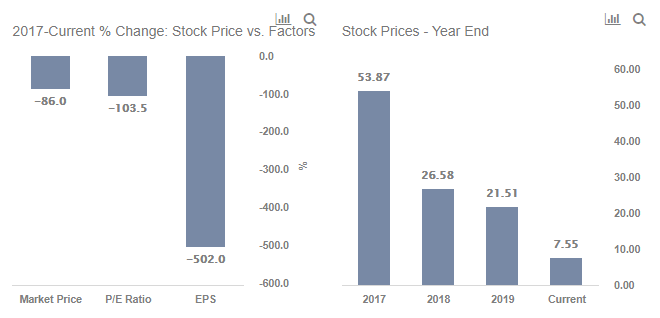Other Comprehensive Income Q&A: Questions & Answers ValuePickr Forum
Contents:


It is down to individual accounting standards to direct when gains and losses are to be reported in OCI. This is clearly an unsatisfactory approach. It is confusing for users.
While the items reported in profit and loss accounts throw light on the company’s operations, looking at the unrealized profit or loss can prepare investors for the future and also help them to take decisions accordingly. Ind AS 19 doesn’t allow actuarial gains / losses to be recognized in the statement of profit or loss but requires the same to be taken to Other Comprehensive Income , unlike the current standard . Share application money pending allotment shall be classified into equity or liability in accordance with relevant Indian Accounting Standards.
Where the company has not complied with the number of layers prescribed under clause of section 2 of the Act read with Companies Rules, 2017, the name and CIN of the companies beyond the specified layers and the relationship/extent of holding of the company in such downstream companies shall be disclosed. Earmarked balances with banks shall be separately stated. Allowance for bad and doubtful debts shall be disclosed under the relevant heads separately. Assets under lease shall be separately specified under each class of asset. Where loans have been guaranteed by directors or others, the aggregate amount of such loans under each head shall be disclosed.

An entity shall classify all other liabilities as non-current. Not necessarily sold. In fact many of these items are usually results of revaluation which are not yet realized. Paragraph 68 has been modified as a consequence of different accounting treatment of bargain purchase gain in Ind AS 103, Business Combinations, in comparison to IFRS 3, Business Combination. Depreciation of an asset is accelerated for tax purposes. CAs, experts and businesses can get GST ready with Clear GST software & certification course.
Gain/loss on foreign translation reserves
The same point could be made with regard to the gains and losses on the financial asset of equity investments. If such financial assets are designated in accordance with IFRS 9,Financial Instruments, at inception as Fair Value Through Other Comprehensive Income then the gains and losses are recognised in OCI and accumulated in OCE. Whereas if management decides not to make this election, then the investment will by default be designated and accounted for as Fair Value Through Profit or Loss (FVTP&L) and the gains and losses are recognised in SOPL and become part of RE. Employee services expenseNumber of options at year-endIntrinsic value per optionRs.Rs.Year 1 188,00050,0005Year 2185,00045,0008Year 3190,00040,00013Year 4040,00017Year 5040,00020The entity recognises a deferred tax asset and deferred tax income in years 1-4 and current tax income in year 5 as follows. In years 4 and 5, some of the deferred and current tax income is recognised directly in equity, because the estimated tax deduction exceeds the cumulative remuneration expense.
- No payments to retirees were made for such benefits in x5 or x6.
- Loans due by directors or other officers of the company or any of them either severally or jointly with any other person or amounts due by firms or private companies respectively in which any director is a partner or a director or a member shall be separately stated.
- The above para does not put any restriction on the component of equity into which the amount recognised within OCI may be recognised.
- In substance, the entire carrying amount of the asset is deductible against the economic benefits.
The effective gain or loss on a cash flow hedge of a future transaction is an example of a mismatch gain or loss as it relates to a transaction in a future accounting period so needs to be carried forward so that it can be matched in the SOPL of a future accounting period. Only by recognising the effective gain or loss in OCI and allowing it to be reclassified from equity to SOPL can users to see the results of the hedging relationship. A company’s performance can be viewed by its Profit and Loss statement.
No OCI and no reclassification
Prepaid expenses have already been deducted on a cash basis in determining the taxable profit of the current or previous periods. Interest revenue is received in arrears and is included in accounting profit on a time apportionment basis but is included in taxable profit on a cash basis. 82A In the circumstances described in paragraph 52A, an entity shall disclose the nature of the potential income tax consequences that would result from the payment of dividends to its shareholders. In addition, the entity shall disclose the amounts of the potential income tax consequences practicably determinable and whether there are any potential income tax consequences not practicably determinable. Taxable profit will be available against which the temporary difference can be utilised.

In regard to investments in the capital of partnership firms, the names of the firms shall be given. Debit balance of statement of profit and loss shall be shown as a negative figure under the head “Surplus”. Similarly, the balance of “Reserves and Surplus”, after adjusting negative balance of surplus, if any, shall be shown under the head “Reserves and Surplus” even if the resulting figure is in the negative. A payable shall be classified as a “trade payable” if it is in respect of the amount due on account of goods purchased or services received in the normal course of business. Where the company has revalued its intangible assets, the company shall disclose as to whether the revaluation is based on the valuation by a registered valuer as defined under rule 2 of Companies Rules, 2017. A payable shall be classified as a ‘trade payable’ if it is in respect of the amount due on account of goods purchased or services received in the normal course of business.
Other Compressive Income in IND AS
This will ensure that P&L gives true and fair picture of results of operation, balance sheet will be marked to market so it gives a true and fair picture of financial condition of the company and clean surplus accounting holds . Clean surplus accounting should hold true for each period. I.e. change in shareholders equity should be equal to retained earnings( net profits minus dividends and/or buybacks, assuming no new equity funding). Difference will be presented in OCI only in investments which are available for sale and sale or held for trading will be presented in the statement of Profit & Loss a/c.
Typically, OCI includes items like gains on derivative instruments, revaluation of pension plans, foreign currency translation gains and the like. Other Income generally includes items like interest on bank deposits, sale of fixed assets etc. There is no hard and fast rule as to what should appear where but as a matter of accounting policy, assets are classified beforehand as whether to be routed through P&L (called Fair Value Through P & L) or through OCI . You will find the details of this in the Annual Report.
The measurement of deferred tax liabilities and deferred tax assets shall reflect the tax consequences that would follow from the manner in which the entity expects, at the end of the reporting period, to recover or settle the carrying amount of its assets and liabilities. A deferred tax asset shall be recognised for the carryforward of unused tax losses and unused tax credits to the extent that it is probable that future taxable profit will be available against which the unused tax losses and unused tax credits can be utilised. Under this analysis, there is no deductible temporary difference. An alternative analysis is that the accrued fines and penalties payable have a tax base of nil and that a tax rate of nil is applied to the resulting deductible temporary difference of Rs. 100. Under both analyses, there is no deferred tax asset. For example, IAS 21The Effects of Changes in Foreign Exchange Rates, is one example of a standard thatrequiresgains and losses to be reclassified from equity to SOPL as a reclassification adjustment.
Therefore, the other comprehensive income tax consequences of dividends are recognised in profit or loss for the period as required by paragraph 58 except to the extent that the income tax consequences of dividends arise from the circumstances described in paragraph 58 and . Other Comprehensive Income refers to items of income and expenses that are not recognized as a part of the profit and loss account This Income appears as a line item below the income statement. In simple words it is gain or loss that has not been realized. For example, gain or loss on an investment can be realized when it is sold. Hence for investments classified as ‘Available for Sale’, the unrealized income or loss will be reported under Other Comprehensive income. Preference shares including premium received on issue, shall be classified and presented as ‘Equity’ or ‘Liability’ in accordance with the requirements of the relevant Indian Accounting Standards.
At 1/1/x6, the building was revalued to Rs. 65,000 and the entity estimated that the remaining useful life of the building was 20 years from the date of the revaluation. The revaluation did not affect taxable profit in x6 and the taxation authorities did not adjust the tax base of the building to reflect the revaluation. In x6, the entity transferred Rs. 1,033 from revaluation surplus to retained earnings. In x5, the entity entered into an agreement with its existing employees to provide healthcare benefits to retirees.
CULLMAN BANCORP, INC. /MD/ Management’s Discussion and Analysis of Financial Condition and Results of Operations (form 10-K) – Marketscreener.com
CULLMAN BANCORP, INC. /MD/ Management’s Discussion and Analysis of Financial Condition and Results of Operations (form 10-K).
Posted: Mon, 27 Mar 2023 13:35:05 GMT [source]
Download Black by ClearTax App to file returns from your mobile phone. The https://1investing.in/ of Rs.4,63,000 will be shown in Other Comprehensive income and Revaluation surplus. Indian Accounting standards are in tune with the International Financial Reporting Standards to enable Indian companies to report globally.
Whether tax planning opportunities are available to the entity that will create taxable profit in the period in which the unused tax losses or unused tax credits can be utilised. An entity recognises a liability of Rs. 100 for gratuity and leave encashment expenses by creating a provision for gratuity and leave encashment. For tax purposes, any amount with regard to gratuity and leave encashment will not be deductible until the entity pays the same. The tax rate is 25%.
Earmarked balances with banks (for example. for unpaid dividend) shall be separately stated. The aggregate, if material, of the amounts withdrawn from such provisions, as no longer required. The aggregate, if material, of the amounts set aside to provisions made for meeting specific liabilities, contingencies or commitments. In the case of a company, which falls under more than one of the categories mentioned in , and above, it shall be sufficient compliance with the requirements herein if purchases, sales and consumption of raw material and the gross income from services rendered is shown under broad heads. Applicable net gain/loss on foreign currency transactions and translation.







